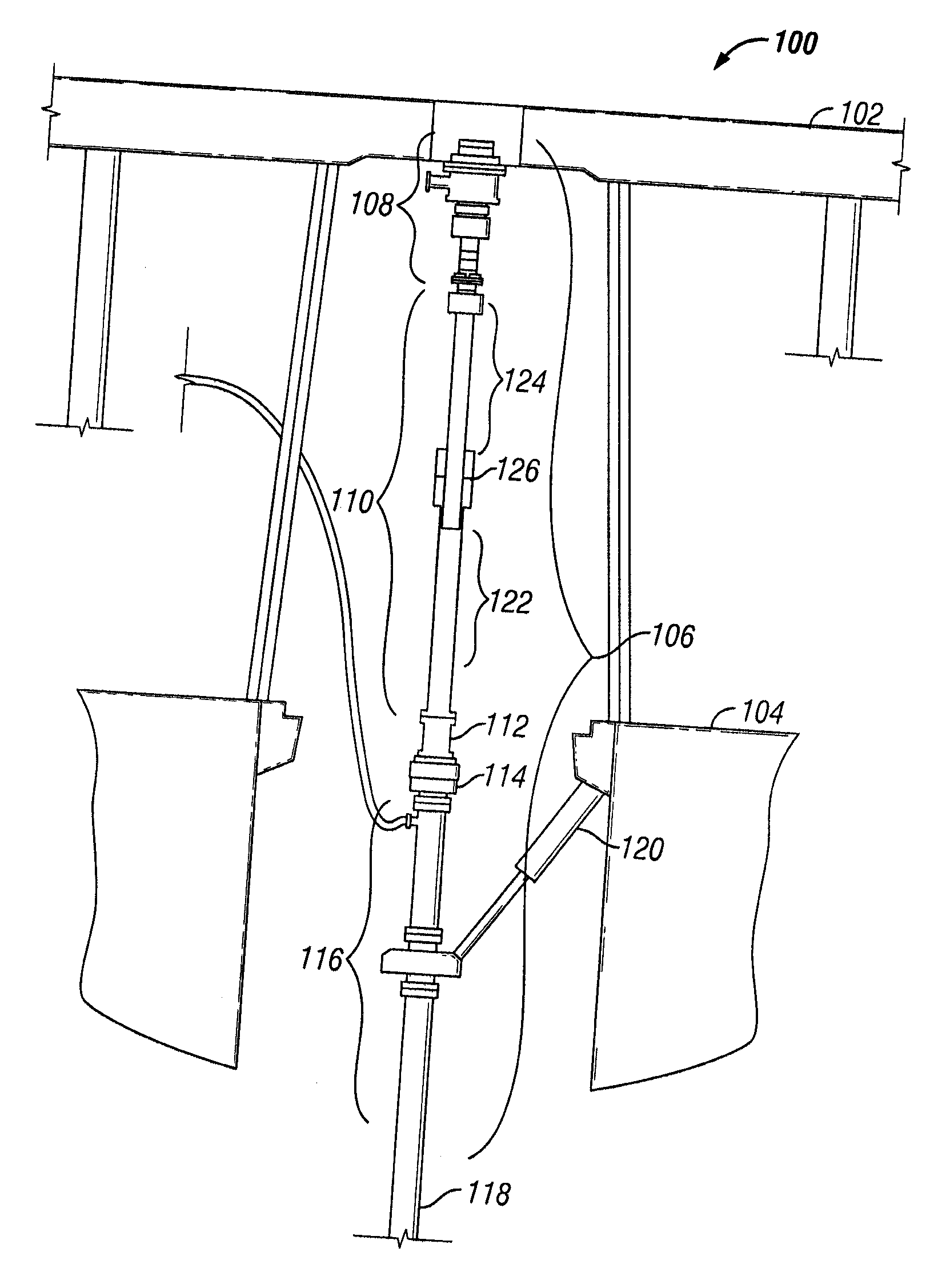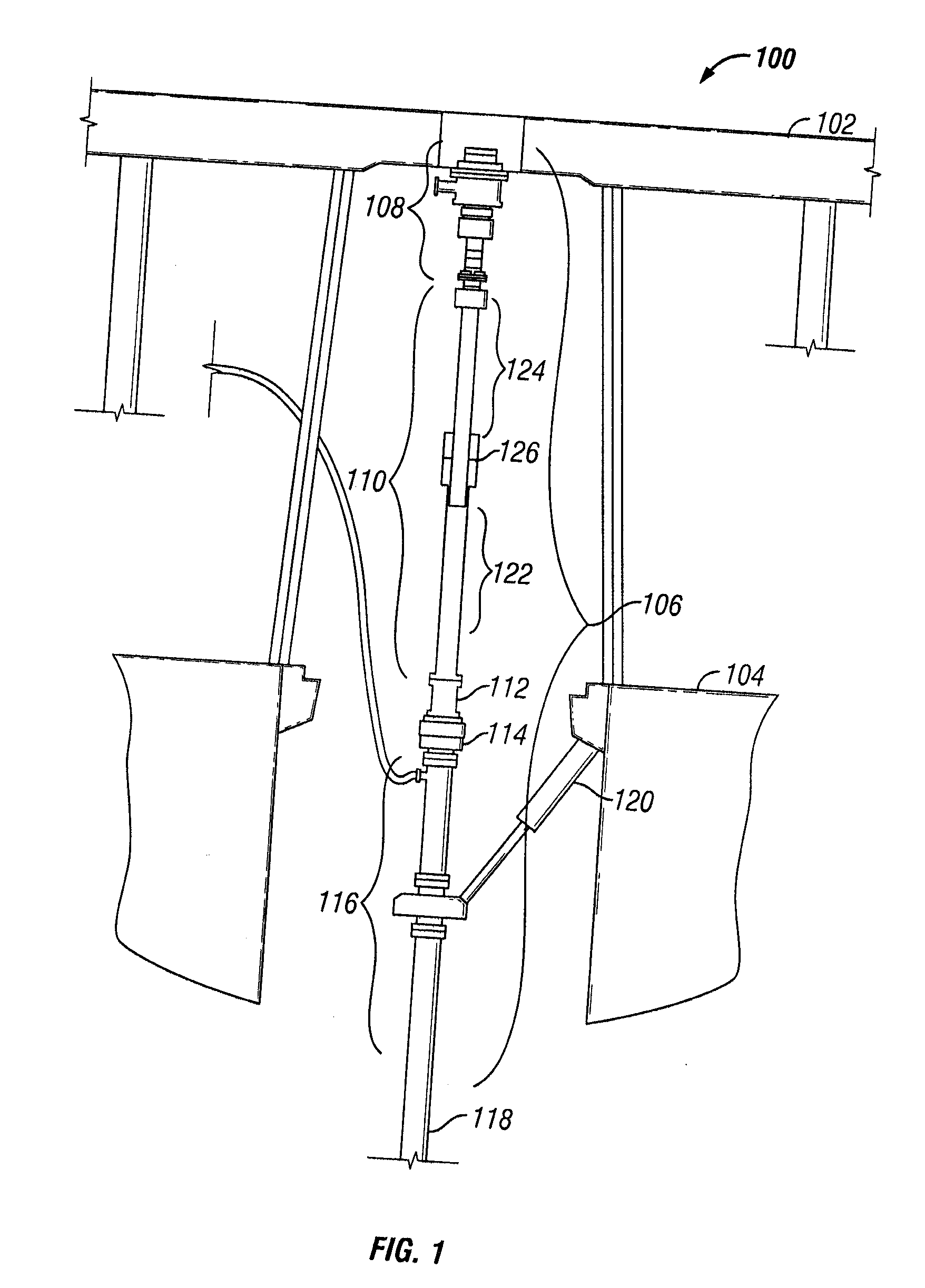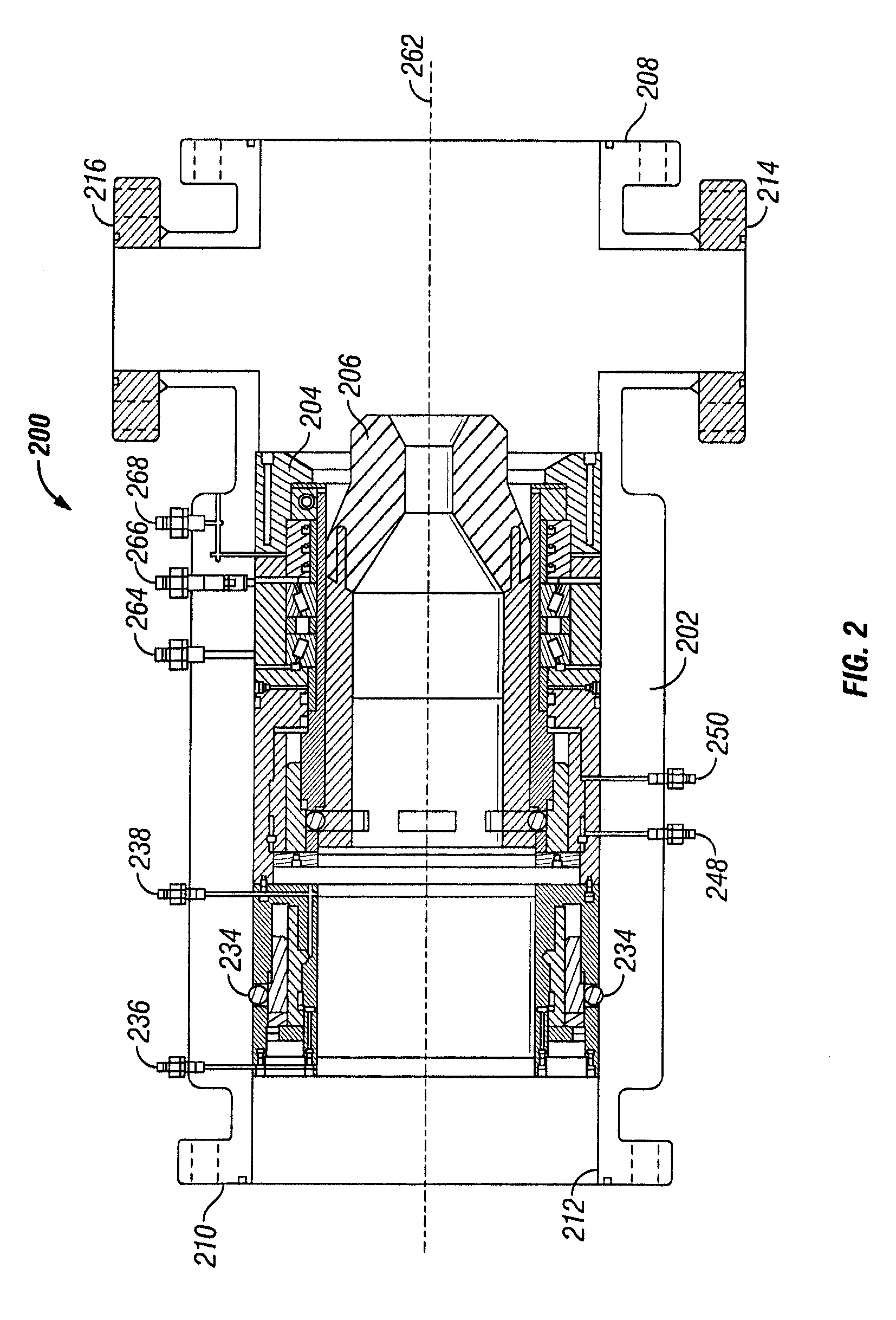Flushing procedure for rotating control device
a control device and rotating control technology, applied in mechanical equipment, sealing/packing, borehole/well accessories, etc., can solve the problems of wellbore kicking or rapid increase of pressure, spewed hydrocarbons and other undesirable fluids, and blowing of ruptured fluids
- Summary
- Abstract
- Description
- Claims
- Application Information
AI Technical Summary
Problems solved by technology
Method used
Image
Examples
Embodiment Construction
Selected embodiments of the present disclosure include a rotating control device and its use to isolate a lower portion of a drilling riser from an upper portion of a drilling riser. Particularly, the rotating control device may be useful in managed pressure drilling MPD operations where fluids in the annulus of the drilling riser are pressurized over their normal hydrostatic (i.e., their weight) pressure in an effort to more effectively control drilling conditions in a subsea well. In selected embodiments, the rotating control device enables a drillstring engaged therethrough to be rotated and tripped in or out of the wellbore while maintaining the seal between the upper portion and the lower portion of the drilling riser. Furthermore, selected embodiments of the present disclosure include a rotating control device whereby the seal apparatus thereof is retrievable therefrom without disconnecting any portion of the drilling riser.
Referring now to FIG. 1, a portion of an offshore dri...
PUM
 Login to View More
Login to View More Abstract
Description
Claims
Application Information
 Login to View More
Login to View More - R&D
- Intellectual Property
- Life Sciences
- Materials
- Tech Scout
- Unparalleled Data Quality
- Higher Quality Content
- 60% Fewer Hallucinations
Browse by: Latest US Patents, China's latest patents, Technical Efficacy Thesaurus, Application Domain, Technology Topic, Popular Technical Reports.
© 2025 PatSnap. All rights reserved.Legal|Privacy policy|Modern Slavery Act Transparency Statement|Sitemap|About US| Contact US: help@patsnap.com



